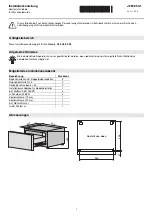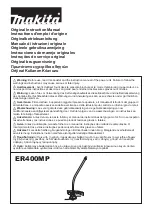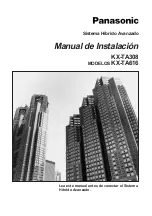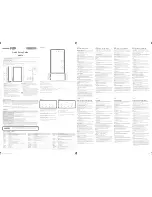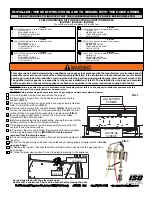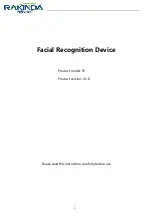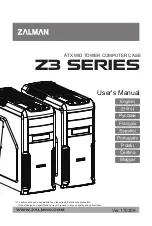
Installation and Operation
900-0230-01-00 Rev A
15
Notes on Three-Stage Charging
The current requirements for absorption and float stages are usually minimal. This varies with
conditions, with battery age, and with bank size. (Larger banks tend to have higher absorption
exit current values, but they also have higher float current.) Any loads operated by the battery
while charging will also impact the charger requirements, as the charger sustains everything.
Not all chargers exit directly to the float stage. Many will enter a quiet or “silent” period during
which the charger is inactive. These chargers will turn on and off to provide periodic
maintenance at the float level, rather than continuous maintenance.
Constant-Float Charging
“Constant-float” charging may be used with the EnergyCell PLR in backup power applications
where the battery bank is rarely discharged. When a discharge occurs, it is critical to recharge
the bank as soon as possible afterward. The voltage range is listed in Table 3 on page 21. The
batteries are considered to be fully charged when the cell voltage is maintained at this level and
the charge current has dropped to a low level over a long period of time. In constant-float
charging, it is critical to compensate the settings for temperature.
Temperature Compensation
Battery performance changes when the temperature varies above or below room temperature
(77°F or 25°C). Temperature compensation adjusts battery charging to correct for the changes.
When a battery is cooler than room temperature, its internal resistance goes up, the voltage
changes more quickly, and the charger reaches its voltage set points more easily. However, it
will not deliver all the required current and the battery will tend to be undercharged. Conversely,
when the battery is warmer than room temperature, its internal resistance goes down, the
voltage changes more slowly, and the charger does not reach its voltages as easily. It will
continue to deliver energy until the set points are reached, but this tends to be far more than
required. The battery will be overcharged. (See
Improper Use
.)
To compensate for these changes, a charger used with the EnergyCell battery must have its
voltages raised by a specified amount for every degree below room temperature. They must be
similarly lowered for every degree above room temperature. This factor is multiplied if additional
batteries are in series. Failure to compensate for significant temperature changes will result in
undercharging or overcharging which will shorten battery life.
EnergyCell PLR Required Compensation
The factor is 4 mV per cell (0.024 Vdc or 24 mV per battery) per degree C above or below room
temperature (77°F or 25°C).
Remote Temperature Sensor
OutBack inverter/chargers and charge controllers are equipped with the Remote Temperature
Sensor (RTS) which attaches to the battery and automatically adjusts the charger settings.
When the RTS is used, it should be placed on the battery sidewall, as close to the center of the
battery (or to the center of the bank) as possible.
The charger determines the RTS compensation factor. Most OutBack chargers are preset to a
compensation of 5 mV per cell. If an RTS is not present, if a different charger is in use, or if a
different compensation factor is required, it may be necessary to adjust the charger settings
manually. (Refer to the charger manual for adjustments.) The RTS should be checked
periodically. Failure to compensate correctly may result in wrong voltages.
Summary of Contents for EnergyCell 200PLR
Page 1: ...EnergyCell PLR Series Owner s Manual...
Page 18: ...EnergyCell Batteries 18 900 0230 01 00 Rev A This page intentionally left blank...
Page 22: ...EnergyCell Batteries 22 900 0230 01 00 Rev A NOTES...
Page 23: ...Specifications 900 0230 01 00 Rev A 23 This page intentionally left blank...


























